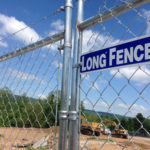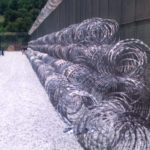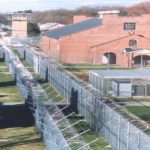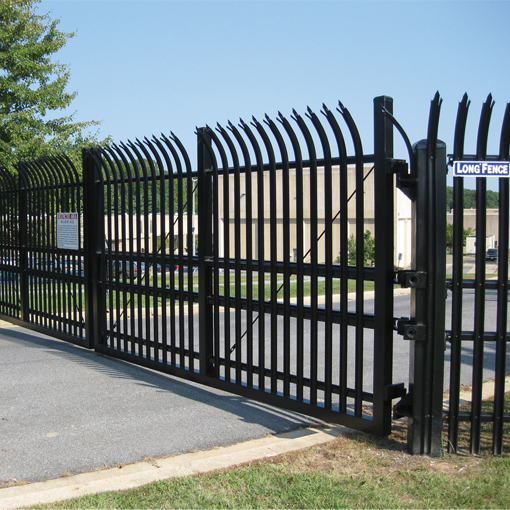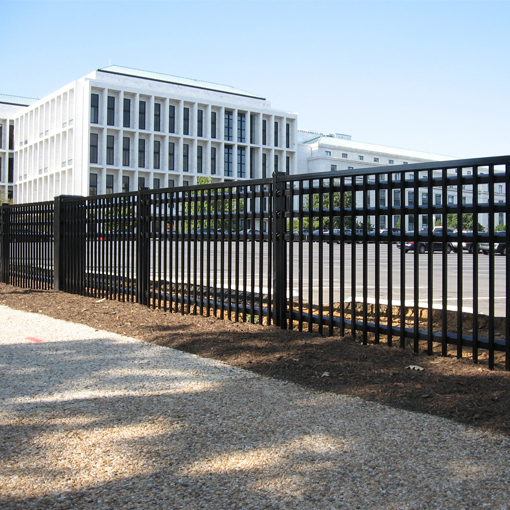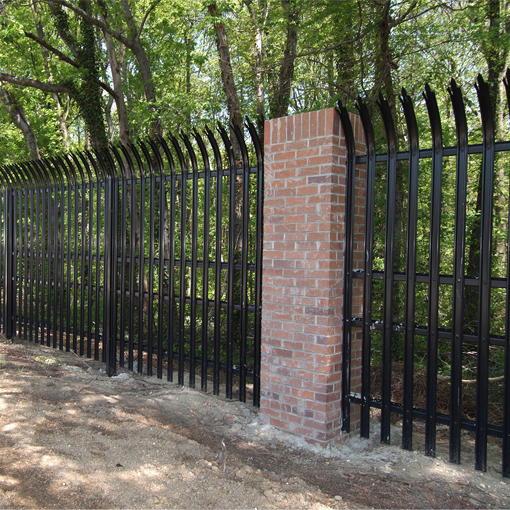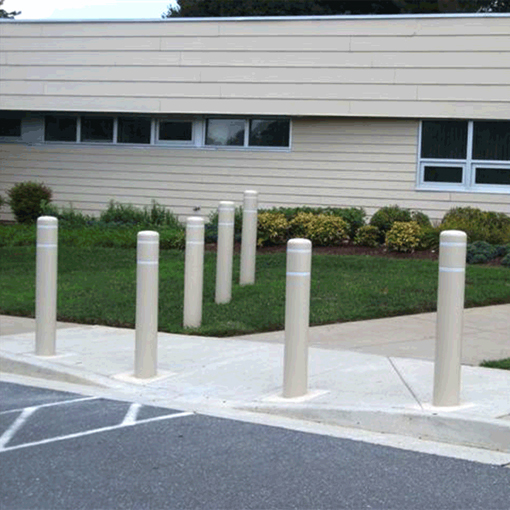- DURABLE MATERIAL
- DETERS CLIMBING
- DETENTION CENTERS
- HIGH SECURITY GOVERNMENT FACILITIES
- CORRECTIONAL FACILITIES
- INDUSTRIAL COMPLEXES
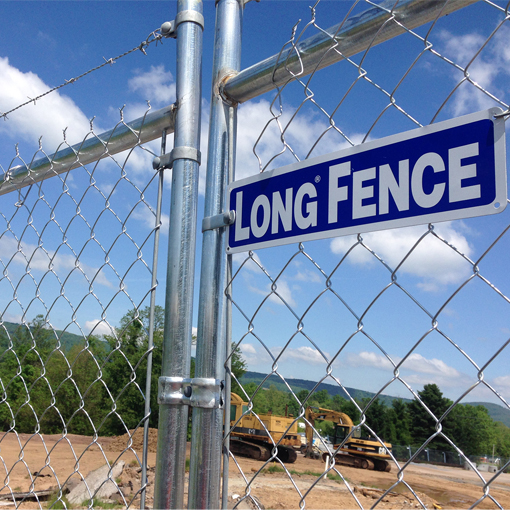
Whether you are protecting valuable business assets, or where security is needed around your facility, LONG® FENCE has a barbed wire product to deter access. Barbed wire fences are used to protect valuable assets, guard public safety and deter crime. Long® Fence furnishes and installs barbed wire products at federal facilities, nuclear and chemical plants, airports and shipyards. Barbed Tape Systems such as helical barbed tape and concertina barbed tape are commonly used in high security applications such as detention centers and government facilities to deter pedestrian access and egress.
LONG® FENCE BARBED WIRE IS A TYPE OF STEEL WIRE FENCING CONSTRUCTED WITH SHARP EDGES OR POINTS ARRANGED AT INTERVALS ALONG THE STRANDS.
Our project managers will help you determine the perfect barbed wire fence solution for your commercial needs. We can also solve your security fence projects or your other commercial needs. We are the best fence company in the nation for a reason. For more information on the best commercial fence products, request a Free Commercial Estimate or call us at 1-800-394-5664.
Securing a property requires toughness, planning, and strategy. Barbed wire offers the greatest potential for all three attributes. Whatever needs securing, Long® Fence barbed wire and barbed tape products can secure it. Read on for a history of barbed wire and barbed tape, their uses, design practices, and their advantages.
History of Barbed Wire
Barbed wire first began as a means of containing cattle in the rapidly expanding American west. First conceived in France, the design of thin, braided wire worked into bristles gained popularity due to its cost effectiveness and ease of installation over other fencing options at the time. Texas became the first testing grounds for the new product after ranchers were impressed with the material’s ability to deter cattle. In fact, barbed wire proved so effective a deterrent that major conflict erupted after the “Big Die-Up” incident in which cattle fleeing blizzards were unable to pass through barbed wire fencing and largely perished. The resulting “Fence Cutting Wars” of the 1880s centered on major issues of land enclosure and westward expansion, with barbed wire fencing at the heart of the conflict. So barbed wire became the invention that tamed the West.

“Whatever needs securing, Long® Fence barbed wire and barbed tape products can secure it.”
The 20th century saw the expansion of barbed wire fencing into other uses, especially in security and warfare. Barbed wire fencing came to symbolize the brutality of trench warfare in World War I, and more generally, the horror that played out as Europeans exploited new technological innovations for the use of killing. The major military conflicts of the first half of the century showed the world that new technology, including barbed wire, must serve the interests of society rather than used as a weapon against it.
Types of Barbed Wire
Barbed Wire – Generally two strands of steel, especially galvanized steel. Different wires come with different amounts of zinc coating, classified into classes by the American Society for Testing Materials. The “barbs” are twisted onto the strand and can come in 2-point and 4-point varieties. The wire itself can come in different thicknesses, or gauges, ranging from 1.5-2.5mm.Barbed Tape – Rather than barbs, barbed tape uses steel tape as the method of deterrence. This tape can be sharp, especially on the corners that come to a point. The barbs can vary in length, with short barbs measuring near 10mm, medium barbs close to 20mm, and long barbs around 60mm. Like barbed wire, it can be constructed with regular and galvanized steel, and also commonly with stainless steel to resist rusting. Barbed tape can be installed in different patterns or structures, including helix, concertina, and flat configurations.
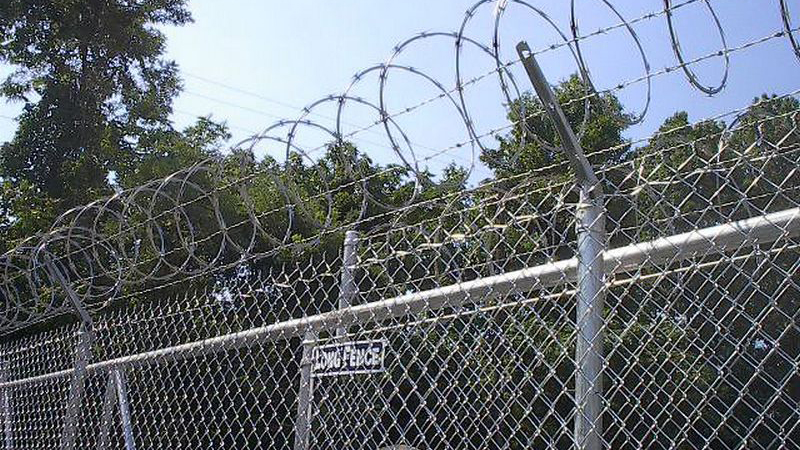
“Nothing since the first development of barbed wire in the 19th century has come along to do a better job of containing livestock”
Uses of Barbed Wire
Agricultural containment
Barbed wire’s original use as a means of containing cattle continues to be one of its most widespread uses given its continued effectiveness – nothing since the first development of barbed wire in the 19th century has come along to do a better job of containing livestock with more ease or cost-effectiveness.The University of Georgia Extension recommends a fence around an entire farm property to delineate property lines as well as contain livestock. The areas of next highest priority are permanent pastures. Fences around ponds can help control livestock access to water. Next in priority are cultivated fields used for pasture. This includes areas for hogging peanuts and corn as well as any fields that may be used for grazing after harvest.
Design for agricultural applications
Be sure of property lines before constructing any fences. Maps of property lines can be found at local county offices, or landowners can also pay for a survey of their land. After delineating property boundaries, the next step is to determine post size and placement. This also is the time to plan out gates and lanes to connect livestock buildings to pastures. Once all the planning is completed, it’s time to plot out the fenceline.Standard barbed wire fences usually have posts between 4-5’ in height spaced between 10-12’ apart. Curves and hills will require special consideration with the use of surveying equipment or sighting stakes to establish the fenceline. End posts and corner posts also require special planning, given the extreme force they must support in stringing the wire and maintaining its tautness. The greater the length of the fence, the greater the force exerted upon these posts, and therefore the greater structural support that must be implemented. Soil composition matters here as well–sandy and muddy soil require deeper post setting than more stable soil types.
Security
Barbed wire fences are ubiquitous in situations that require protections from intruders. The optics of a barbed wire fence provide excellent deterrence for would-be trespassers. Should those people choose to scale the fence, barbed wire can prove exceptionally difficult to breach.Certain fence designs can especially improve perimeter security and will be discussed later in this article. Even if intruders come equipped with the equipment and knowledge needed to compromise a barbed wire fence, this will cost them valuable time for police and security personnel to respond to the breach.
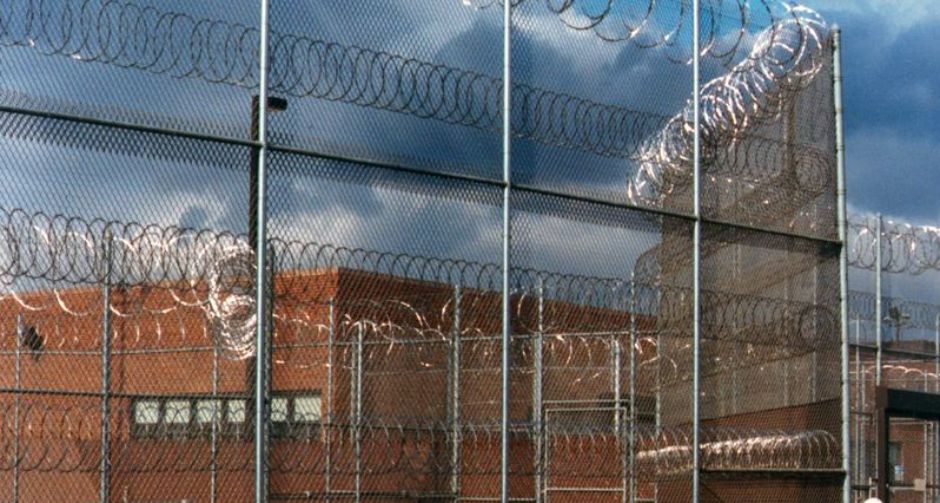
“Barbed wire can prove exceptionally difficult to breach.”
Design for security applications
Given barbed wire’s flexibility and propensity for customization, the options for implementing a barbed wire and barbed tape security fences are wide. The first consideration is the type of fence itself. Generally, this involves trade-offs between the level of security provided, aesthetic qualities, and cost, among other factors. Fencing options include:
Chain link – one of the most common fencing options, widely used across various commercial applications. While they can vary in height, chain link fences are built and topped with barbed wire or barbed tape.
Barbed tape mesh – Similar to chain link fences but constructed entirely of barbed tape. Adds an extra layer of security, as the fence is much more difficult to scale and cut. The look of the fence can also add a measure of deterrence.
Welded wire mesh – Similar to chain link fences and barbed tape mesh, the advantages of welded wire mesh are its ease of installation and potential for customization. Depending on the make of the mesh, it can be stronger and sturdier than the previous two fence types, providing a good compromise between price and ease on one side and security on the other.
Wall (brick, concrete, etc.) – More expensive than wire or chain link fences, sturdy walls are tougher to penetrate. This forces the intruder to scale the wall as opposed to cut through it with tools. These fences also limit sightlines, which can be important in situations in which concealment provides value.
Fencetop configurations include:
Straight angle barbed wire – the simplest construction, consisting of strands of barbed wire atop a fence.
45-degree angle barbed wire (single or double) – Arms atop the fence angle the barbed wire in the direction of the intruder to increase the difficulty of scaling the fence. This generally entails 3 strands of barbed wire. Can be built facing a single direction or doubled up for added security.
Barbed tape – can top a fence in various patterns discussed above, including concertina, helix, flat, etc.
Barbed tape and barbed wire combination – Generally constructed with barbed tape sitting between barbed wire strung at a 45-degree angle.
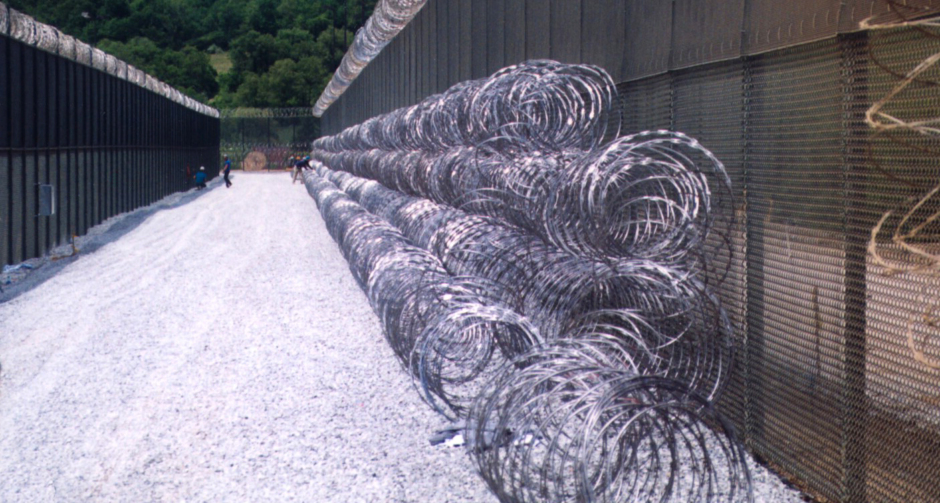
“Both barbed wire and barbed tape can prove extremely difficult to cross without any special tools.”
Advantages of barbed wire and tape
Cost effectiveness
Perhaps the greatest feature of these products is their cost. Given the ease of production and transport, barbed wire and barbed tape can be made in large quantities and distributed extremely widely.
Difficult to breach
Both barbed wire and barbed tape can prove extremely difficult to cross without any special tools. These tools, including wire clippers and materials to lay across the fence, can be unwieldy and slow down the intruders greatly. More, even with these tools, barbed wire and barbed tape fencing may still accomplish their purpose of preventing entry.
Quick installationBoth products are sold in coils, meaning installation simply consists of rolling out the wire and fixing it to a fence. Depending on the construction of the fence, the process can take a mere few hours to a few days. While sturdier fences can take a greater investment of time and energy, the addition of barbed wire and barbed tape and quickly elevate the security level of the fence.CustomizationGiven the physical flexibility of the materials, barbed wire and barbed tape can be retrofitted to almost any circumstances. Property owners can customize the type of product, where to mount it, and when to add or subtract layers of protection, among other factors.Turn to Long® Fence for all your fencing needsSince 1945, Long® Fence has been a leader in the fencing industry. We work with each client to design a plan that meets their specific needs, offering flexibility and customization in the process. The depth of our experience gives us a deep understanding of the products we supply and which can provide the best possible value to our customer. In the case of barbed wire and barbed tape, we can partner with your organization to determine the type of security required and the best fencing solutions to secure your property. Give us a call for a free estimate today.


